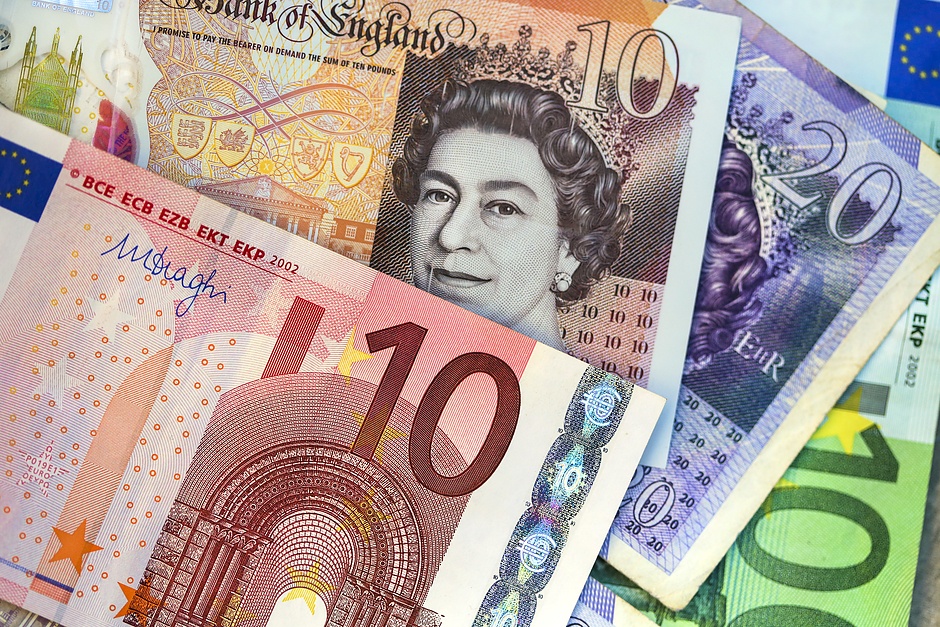EUR/GBP Price Analysis: Subdued around 0.8410 as positive divergence appear
- EUR/GBP edges up to 0.8410 following the ECB's rate decision and strong UK jobs data.
- Technical analysis shows a potential 'falling wedge' pattern, indicating possible new weekly highs.
- Key resistance levels: 0.8460 (July 8 high), 0.8478 (50-DMA), and 0.8499 (July 1 peak); support levels: 0.8403 (July 18 low) and 0.8383 (YTD low).

The EUR/GBP edged up some 0.10% on Thursday after the European Central Bank (ECB) held rates unchanged. Additionally, solid jobs data from the United Kingdom (UK) kept the cross-pair from rallying after the ECB’s decision, so the pair remained at around the 0.8410 area for the second straight day.
EUR/GBP Price Analysis: Technical outlook
The EUR/GBP remains downward biased from a technical standpoint, and it seems that a ‘falling wedge’ is forming, which most likely pushes the cross-pair to new weekly highs.
Momentum favors sellers, with the Relative Strength Index (RSI) remaining bearish. Nevertheless, a positive divergence between price action falling to lower lows and the RSI registering higher lows might open the door for an upward correction.
Key resistance levels for the pair lie above July 8 high at 0.8460. A breach of the latter will expose the 50-day moving average (DMA) at 0.8478, before testing the July 1 peak of 0.8499. Further gains are seen above that level, with the 100-DMA at 0.8520 and the 200-DMA at 0.8572.
On the flip side, if EUR/GBP extends its losses past the July 18 bottom of 0.8403, the next support would be the year-to-date (YTD) low of 0.8383. A further downside is seen beneath the latter, at the August 2, 2022, low of 0.8339.
EUR/GBP Price Action – Daily Chart
Euro FAQs
The Euro is the currency for the 20 European Union countries that belong to the Eurozone. It is the second most heavily traded currency in the world behind the US Dollar. In 2022, it accounted for 31% of all foreign exchange transactions, with an average daily turnover of over $2.2 trillion a day. EUR/USD is the most heavily traded currency pair in the world, accounting for an estimated 30% off all transactions, followed by EUR/JPY (4%), EUR/GBP (3%) and EUR/AUD (2%).
The European Central Bank (ECB) in Frankfurt, Germany, is the reserve bank for the Eurozone. The ECB sets interest rates and manages monetary policy. The ECB’s primary mandate is to maintain price stability, which means either controlling inflation or stimulating growth. Its primary tool is the raising or lowering of interest rates. Relatively high interest rates – or the expectation of higher rates – will usually benefit the Euro and vice versa. The ECB Governing Council makes monetary policy decisions at meetings held eight times a year. Decisions are made by heads of the Eurozone national banks and six permanent members, including the President of the ECB, Christine Lagarde.
Eurozone inflation data, measured by the Harmonized Index of Consumer Prices (HICP), is an important econometric for the Euro. If inflation rises more than expected, especially if above the ECB’s 2% target, it obliges the ECB to raise interest rates to bring it back under control. Relatively high interest rates compared to its counterparts will usually benefit the Euro, as it makes the region more attractive as a place for global investors to park their money.
Data releases gauge the health of the economy and can impact on the Euro. Indicators such as GDP, Manufacturing and Services PMIs, employment, and consumer sentiment surveys can all influence the direction of the single currency. A strong economy is good for the Euro. Not only does it attract more foreign investment but it may encourage the ECB to put up interest rates, which will directly strengthen the Euro. Otherwise, if economic data is weak, the Euro is likely to fall. Economic data for the four largest economies in the euro area (Germany, France, Italy and Spain) are especially significant, as they account for 75% of the Eurozone’s economy.
Another significant data release for the Euro is the Trade Balance. This indicator measures the difference between what a country earns from its exports and what it spends on imports over a given period. If a country produces highly sought after exports then its currency will gain in value purely from the extra demand created from foreign buyers seeking to purchase these goods. Therefore, a positive net Trade Balance strengthens a currency and vice versa for a negative balance.
Author

Christian Borjon Valencia
FXStreet
Christian Borjon began his career as a retail trader in 2010, mainly focused on technical analysis and strategies around it. He started as a swing trader, as he used to work in another industry unrelated to the financial markets.


















